Florida is known for its beautiful beaches, warm weather, and stunning natural landscapes, but it’s also known for its alligators. These powerful and prehistoric creatures can strike fear into the hearts of even the bravest swimmers. Despite their fearsome reputation, alligators generally avoid human contact and attacks on humans are rare. It is important to exercise caution and respect when in areas where alligators may be present. However, the reality is that alligator attacks are extremely rare in Florida, and with a little common sense and caution, swimming in Florida’s lakes and rivers can be a safe and enjoyable experience. So, if you’re looking to cool off in the Sunshine State’s crystal-clear waters, don’t let fear hold you back – jump in and enjoy all the natural wonders that Florida’s lakes and rivers have to offer!

©Richard Frazier/Shutterstock.com
What is an Alligator?
An alligator (Alligator mississippiensis) is a large, semi-aquatic reptile that belongs to the family Alligatoridae, which also includes the caiman. Alligators are found in the Southeastern United States, primarily in Florida, but also in parts of Alabama, Georgia, Louisiana, Mississippi, North/South Carolina, and Texas. Alligators have powerful, armored bodies, with thick, scaly skin that ranges in color from olive green to black. They have wide, flat heads with broad snouts. Rows of sharp teeth line their strong jaws. Alligators are carnivorous and feed on a variety of prey, including fish, birds, mammals, and other reptiles.
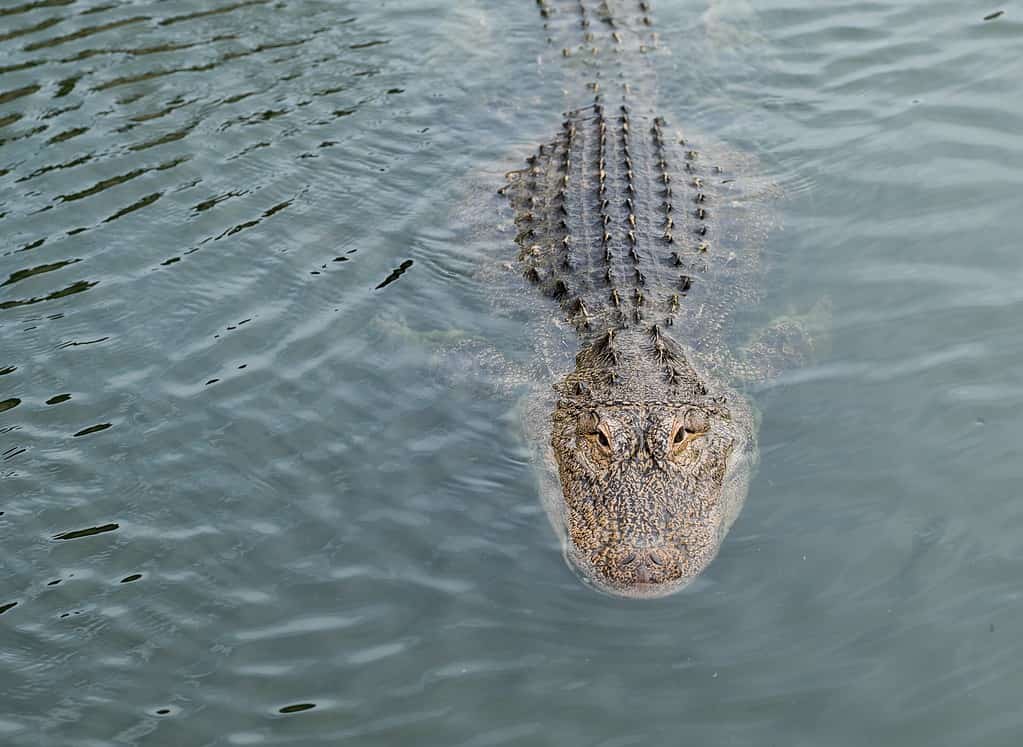
©David Louis Tiffany/Shutterstock.com
Where do Alligators Live?
Understanding the characteristics and preferable habitats of alligators is crucial in avoiding them. Alligators are found in freshwater habitats, including swamps, marshes, lakes, and rivers, although they can also tolerate brackish water in coastal areas. They prefer shallow bodies of water with plenty of vegetation for cover, as well as basking sites, like logs and banks. Alligators are cold-blooded and regulate their body temperature by basking in the sun, so they need areas with both sunny and shaded spots to thermoregulate.
The depth of the water an alligator can live in varies depending on the size of the animal, as larger alligators are able to handle deeper water. Adult alligators are capable of diving to depths of up to 20 feet (6 m) or more in search of prey, but they typically prefer to stay in shallower water where they can bask in the sun to regulate their body temperature. Juvenile alligators are typically found in shallower water where they are less likely to encounter larger predators.
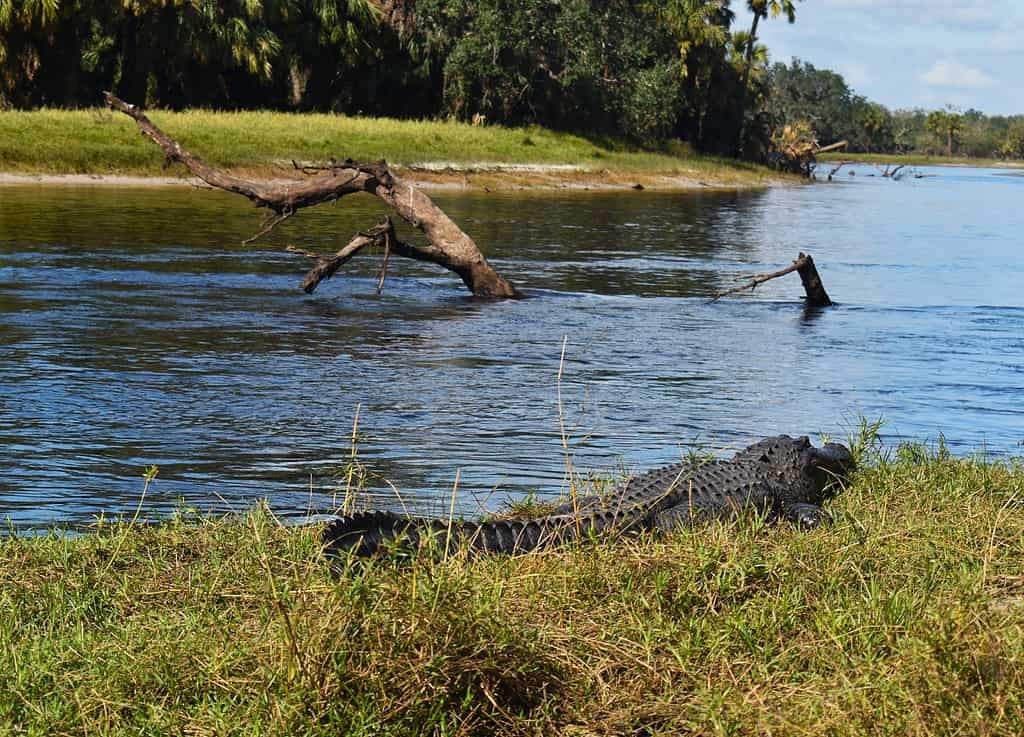
©SuJo Studios/Shutterstock.com
Alligators in Florida: Don’t Swim in the Everglades
The Everglades is home to one of the largest populations of alligators in the world. It is estimated that there are over 1.25 million alligators in Florida, and many of them can be found in the Everglades. Alligators have adapted well to the unique habitat of the Everglades, which consists of marshes, swamps, and mangrove forests. They play an important role in the ecosystem of the Everglades as top predators, and their presence helps maintain a healthy balance in the food chain. While alligators are fascinating creatures to observe from a safe distance, it is important to exercise caution and follow guidelines when visiting the Everglades to avoid encounters with these apex predators.
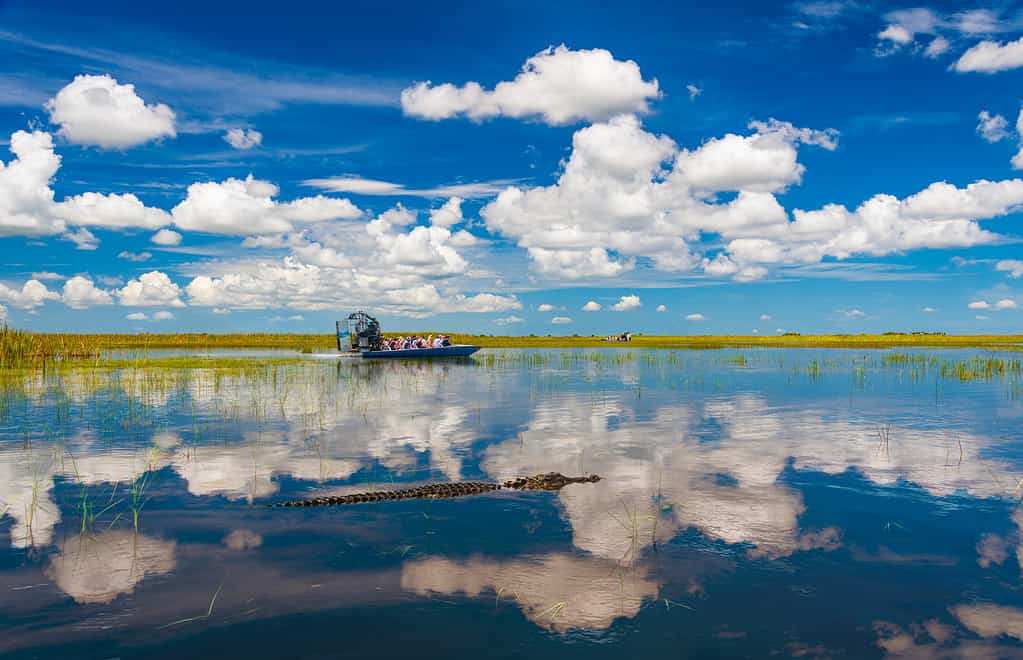
©allouphoto/Shutterstock.com
Recorded Alligator Fatalities
According to the data collected by the Florida Fish and Wildlife Conservation Commission, there have been 26 alligator attacks resulting in human fatalities in Florida since 1948. Fatal alligator attacks have also occurred in Georgia, Louisiana, South Carolina, and Texas. The recorded number of human fatalities from alligator attacks compiled by the U.S. Fish and Wildlife Service in the United States (as of 2022) stands at 41. It’s important to note that not all of these fatalities were due to unprovoked alligator attacks. Because of the tragic circumstances surrounding fatal alligator attacks, they receive widespread attention, but in truth unprovoked alligator attacks are rare.
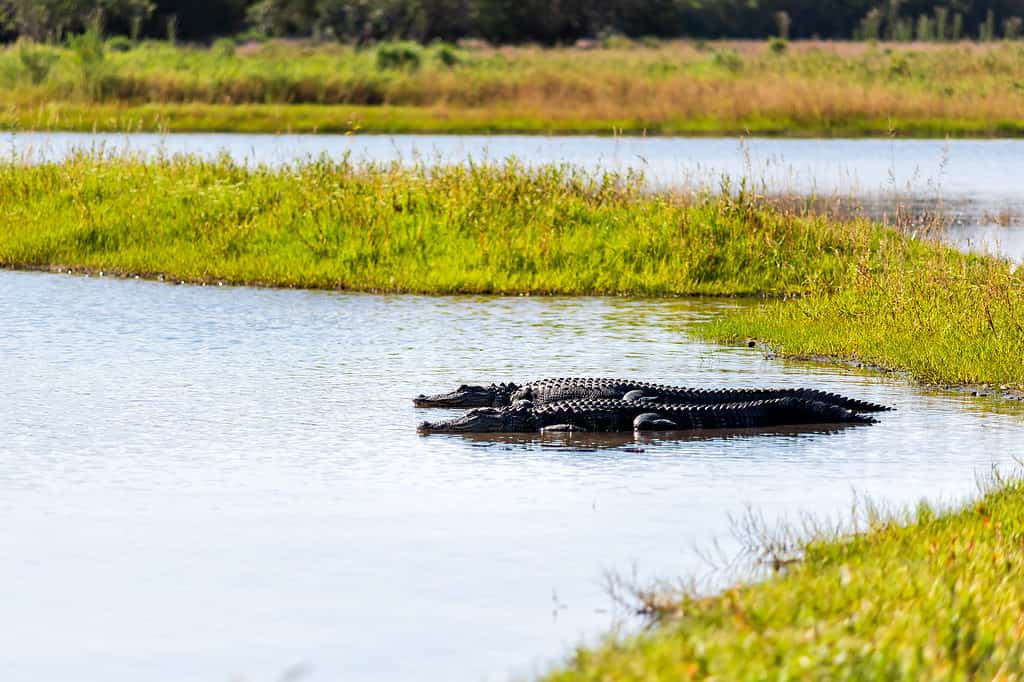
Alligators in Florida: Precautionary Measures
While alligator attacks on humans are rare, it’s essential to exercise caution in areas where alligators may be present. Before jumping into a lake or river in Florida, there are a few things to look for to help ensure your safety:
- Check for warning signs: Many lakes in Florida will have warning signs posted to alert visitors to potential hazards, including alligators.
- Look for signs of alligator activity: If there are no warning signs present, look for signs of alligator activity, such as bubbles on the surface of the water or alligator tracks on the shore. If you see any of these signs, avoiding the water is best.
- Avoid swimming at night: Alligators are nocturnal creatures that are most active from dusk to dawn, so it’s best to avoid swimming during these times.
- Avoid swimming in murky water: Alligators are more likely to mistake a person for prey in murky water, so it’s best to avoid swimming in water that is hard to see through.
- Swim with a buddy: It’s always a good idea to swim with a friend or family member. Not only is it more fun, but it also provides an extra layer of safety in case of an emergency.
- Stay in designated swimming areas: Many lakes in Florida have designated swimming areas that are safer than other parts of the lake. Stick to these areas whenever possible.
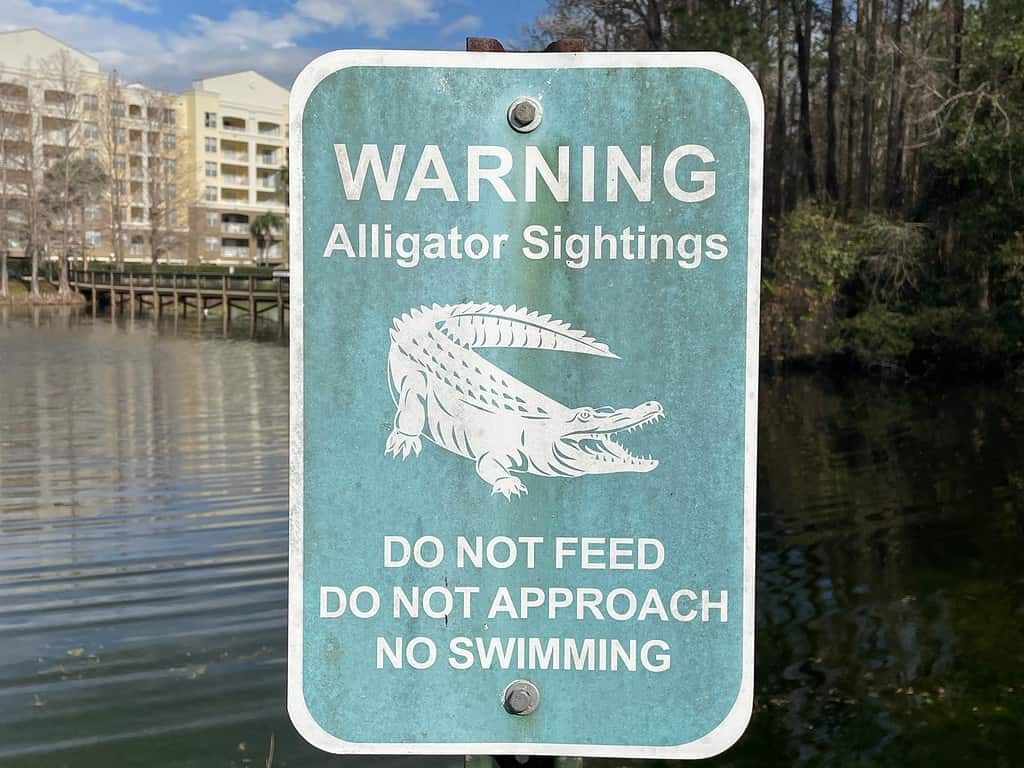
©Concepcion Gonzalez/Shutterstock.com
Alligators in Florida: Is the Ocean/Gulf Safe?
Alligators are not ocean-dwelling creatures. Therefore, beachgoers and ocean enthusiasts don’t have to worry about encountering alligators while enjoying the ocean. Alligators prefer freshwater or brackish water habitats such as swamps, marshes, rivers, and lakes. So, if you plan on swimming or surfing in the ocean, you can rest assured that you won’t have to worry about encountering an alligator. However, it is important to remain vigilant when swimming or surfing in the ocean. While you needn’t worry about alligators, there are other ocean-dwelling predators that might mistake you for a tasty snack. But that’s another can of worms!
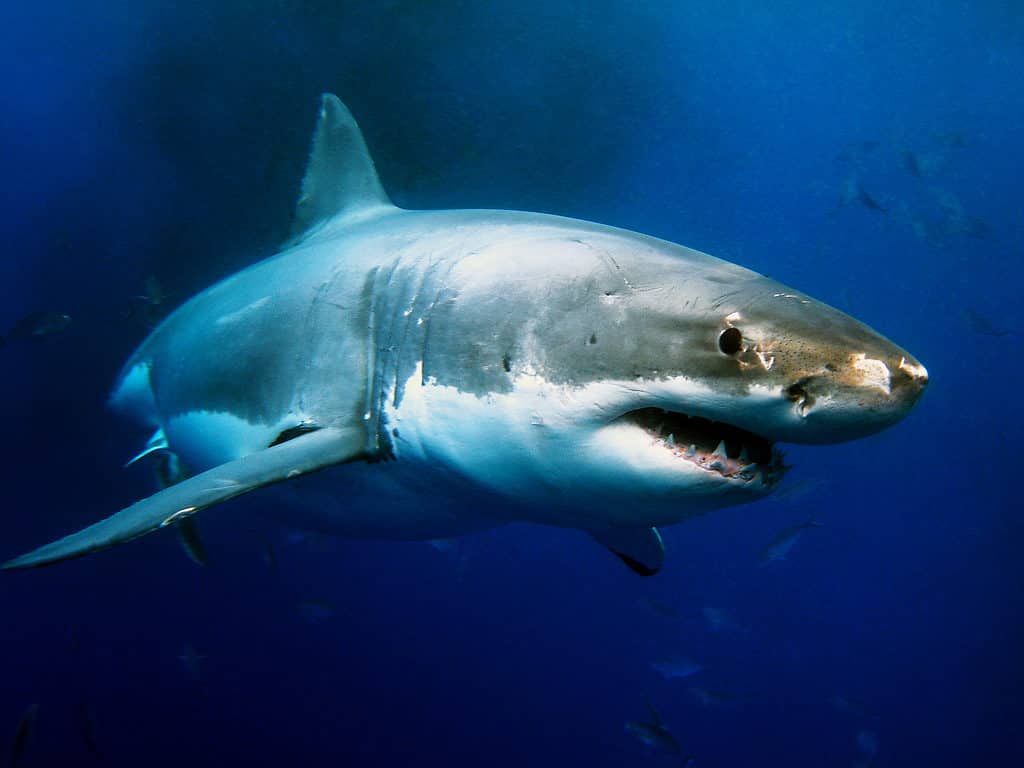
©iStock.com/Whitepointer
Five Fishy Facts about Alligators
- The official state reptile of Florida is The American alligator (Alligator mississippiensis) and has been protected since 1967.
- Alligators are found in all 67 counties in Florida and can be found in almost any body of freshwater, including lakes, rivers, swamps, and marshes.
- Florida is home to the largest population of alligators in the United States, with an estimated 1.3 million alligators living throughout the state. The total alligator population in the United States is approximately 5 million.
- The largest alligator ever documented in Florida was 14 feet (4.2 m) long and weighed over 1,000 pounds (455 kg), discovered in Orange Lake in Alachua County.
- An alligator will generate approximately 3000 teeth through the course of its life, though it only has an average of 75 teeth in its mouth at any given time.
The post Alligators in Florida: Is It Safe to Swim? appeared first on AZ Animals.
from Animal News, Facts, Rankings, and More! - AZ Animals https://ift.tt/7ArvY1O